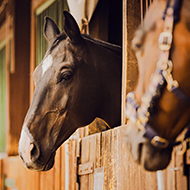More than 25 ducklings have fledged at nature reserve.
This year has seen a bumper breeding season for the rare goldeneye duck, after more than 25 ducklings fledged at the Muir of Dinnet National Nature Reserve in the Cairngorms National Park.
There are around just 200 breeding pairs of goldeneyes in the UK. The protected speices is resident in the Scottish Highlands and a winter visitor elsewhere in the British Isles.
In 2020, just one brood and four duckings was recorded at the Dinnet reserve. Since then, new rules have been introduced to reduce disturbance to the birds during breeding season from visits to the site.
This year’s successful breeding season is a sign that the recent conservation measures are having a positive impact.
Simon Ritchie, NatureScot’s reserve manager at the Muir of Dinnet, said: “We are elated to have so many young fledge. These specialist ducks have been declining locally in recent years, so this is a real boost to the population.
“One of the main factors in recent breeding failings has been disturbance by people going out on the water in canoes, kayaks, inflatables and paddle-boards. Because of this, we worked closely with stakeholders, including recreational users, ornithologists, the Cairngorms National Park, and Dinnet and Kinord Estate to put in place access guidance on Loch Kinord to reduce impacts in the crucial summer months.
“This has had a massively positive impact on our breeding birds, especially our goldeneye population, and we would like to thank everyone for following the access guidance. Together, we are helping conserve an iconic Scottish rarity from local extinction.”
Murray Ferguson, director of planning and place at the Cairngorms National Park Authority, added: “We are delighted to see that goldeneye on the loch are now breeding more successfully and that that the measures to manage disturbance from recreation are working well.
“Many thanks to everyone for following the guidelines. We are sure there are lessons to be learned here that can be applied to other parts of the National Park in due course.”
Image (C) Shutterstock



 Zoetis has launched a new survey to identify management techniques for Equine Herpes Virus (EHV).
Zoetis has launched a new survey to identify management techniques for Equine Herpes Virus (EHV).